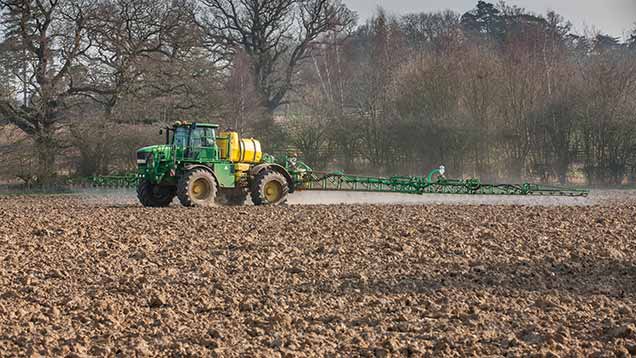Cereals 2015: New guidelines aim to prevent glyphosate-resistant weeds
 ©Tim Scrivener
©Tim Scrivener Increasing risk of glyphosate resistance in arable weeds has prompted the release of new guidelines aimed at preventing its development in the UK.
Lessons from other countries where glyphosate-resistant weeds are rife, along with the changing habits of growers is causing concern among experts that resistance could soon develop here.
The weedkiller’s biggest market is pre-drilling use ahead of establishment, a practice on the rise due to increasing populations of grassweed resistance to selective post-emergence herbicides.
See also: Spray-off blackgrass with glyphosate before Cereals event
It is estimated that growers could be hit with 20% yield loss if the herbicide succumbed to resistance and was no longer effective for this purpose.
The Weed Resistance Action Group (Wrag) has never issued advice on a specific active ingredient, with all bulletins previously relating to specific weed species.
This highlights the chemical’s importance, and Adas business development manager and Wrag chairman James Clarke told Farmers Weekly he is increasingly aware of growers using glyphosate in a way that exposes it to unnecessary risk.
“We have the advantage of seeing what’s happened elsewhere when you don’t get things right, so hopefully we’ll be able to manage the potential problem.
“Losing glyphosate through resistance, or completely through regulation, would put pressure on an already creaking grassweed control system,” he said.
Glyphosate resistance risk is being increased by more frequent applications, lowering dose and poor application timing, with blackgrass and Italian ryegrass the species most at risk. There are currently no confirmed cases in the UK.
The new Wrag guidelines will be simplified into a two-page summary sheet from AHDB Cereals and Oilseeds (formerly HGCA) and focuses on four key areas:
- Prevent survivors – Repeat applications to surviving plants pose the highest risk
- Maximise efficacy – Use right dose for size of weed and on actively growing plants
- Use alternatives – Maximise cultivation or other non-chemical control and use other herbicides in sequence
- Monitor success – Work with agronomists and suppliers, remove survivors and test seed samples of survivors.
Hard copies of the information sheet will be available on the AHDB Cereals and Oilseeds stand at the Cereals event, or downloaded from the AHDB website.
For more news, photos, video and information on the Cereals event see our Cereals 2015 page


